Advances in high-performance drilling fluids enhance wellbore strength, help curb loss
By Maggie Cox, editorial coordinator

Operators and service companies are developing new advances in high-performance drilling fluids and techniques in order to enhance wellbore strength and mitigate difficult-to-drill areas like shale plays, deepwater and HPHT wells.
The industry has evolved to be able to tackle hotter, higher-pressure wells and thousands-of-feet deep extended-reach wells while easy-to-reach resources are being depleted.
“There are new technical challenges because the easy oil is already being produced. It’s the tough oil we’re going after now,” Jim Friedheim, director of corporate fluids research and development, M-I SWACO, said.
In response, drilling fluid teams throughout the industry have developed high-performance drilling fluids to meet environmental regulations while utilizing wellbore-strengthening techniques to preserve the well.
“Wellbore-strengthening techniques are most effective when they are preventative techniques, in that you have to do something to the wellbore before you have bad losses,” Dave Beardmore, drilling fluids specialist, ConocoPhillips, said.
By strengthening the wellbore, the operator can limit the possibility for lost circulation, which can make drilling more efficient. Mr Beardmore suggested seven ways to increase wellbore strength (see sidebar). The most widely used method involves utilizing specially-sized granular additives, others include rigid-plug forming treatments, chemical sealants and low-fluid loss muds.
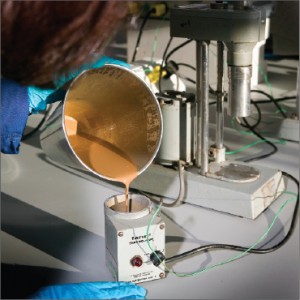
Wellbore-strengthening techniques are similar to lost-circulation techniques, but there are significant differences. Strengthening techniques still focus on avoiding loss, but also on increasing the apparent fracture gradient by sealing the fracture and isolating the fracture tip to keep it from further elongating, while lost circulation only mitigates losses of whole mud.
M-I SWACO integrated borehole-strengthening solution (Figure 1) is an example of this technique.
In conjunction with the movement toward strengthening techniques, there has also been a greater emphasis on high-performance drilling fluids due to stricter environmental regulations and the increased cost of drilling. Operators want the drilling fluids they use to function like one of their tools to drill faster and better, Dr Friedheim said.
“Reliability is a key factor for the operators. They want a fluid that is reliable, and the more reliable fluids are oil-based or synthetic-based muds,” he said.
Part of meeting regional environmental standards, especially in sensitive areas like the Arctic, has been to transform synthetic fluids with relatively higher toxicity into environmentally benign fluids.
This transition has been a challenge not only for drilling fluid teams but operators as well. Operators have to wait on new technology to be proven and tested before they can implement it on a rig.
“The biggest challenge we face is developing new products that maintain mud properties while making the mud benign to the environment,” Mr Beardmore said.
Before low-toxicity synthetic fluids came to fruition, the industry was using cheaper and more damaging fluids, like diesel-based fluids. The fluids today are more costly but are efficient in meeting the needs of operators drilling complicated wells, Dr Friedheim said.
“We’re in hostile environments now, and the fluids are expected to keep up with the demands,” he added.
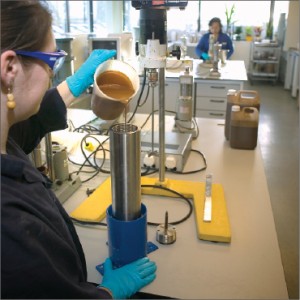
MITIGATING THE VARIETY OF COMPLEX WELLS
Shales
High-pressure, high-temperature wells (HPHT), shales and depleted and underpressured zones are examples of trouble areas that have prompted the innovation of new drilling fluids and wellbore- strengthening techniques.
Shale zones pose a particular problem with water-based fluids. Sometimes, using water-based fluids leaves the operator with a little more than a week to get casing across the well.
According to Ben Bloys, team leader of the fluids and waste management technology group, Chevron, to keep a hole stable in the shale sections of wells, there especially needs to be mechanical help keep the soft shales sturdy, which means using the appropriate mud weight.
Chemical strength is another important part of keeping the hole stable, which requires maintaining the original rock strength for as long as possible. “There are a lot of stories about some shales staying stable for only taking seven days or so when being drilled with water-based mud. There are a dozen ways that water-based fluids interact with shales, and they all reduce the strength of the wellbore,” Mr Bloys said.
However, not all shale plays in North America are the same, said Halliburton Baroid’s director of technology, Nick Braley. “Once we started breaking into the shale play market, we quickly realized the shale plays of North America are very diverse and require a high degree of fluid system customization,” he said. “There was no simple solution that you could introduce to all shales because they aren’t all the same.”
The company developed the SHALEDRIL family of water-based fluid systems designed specifically to meet challenges in the Haynesville, Fayetteville, Barnett and Marcellus shales. These customizable water-based muds help to combat high-temperature and acid gas in the Haynesville, shale delamination of smectite/chlorite mixed-layer clays in the Fayetteville, illitic clay cuttings and dispersion in the Barnett and shale disintegration in the Marcellus.
Halliburton deployed SHALEDRIL H for the first time earlier this year in a well in Louisiana. Currently the company is working on a water-based fluid solution to address challenges in the Eagle Ford Shale.
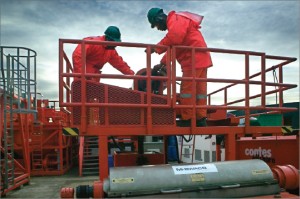
HPHT
Despite the many challenges of drilling in shale, in Mr Braley’s opinion, HPHT wells have been the more difficult to mitigate. Keeping good fluid properties in high-temperature wells is not an easy task. “You have to keep fluid suspension characteristics so you don’t have barite settlement. You can’t afford to see the fluid break down or destabilize under high temperatures,” he said.
Temperature change can make the drilling fluid too viscous or not viscous enough. “We’ve been trying to re-engineer liquid additives to be solid additives, which will still free flow at cold temperatures and maintain good fluid properties,” Dr Friedheim said. Deepwater has given experts insight on how to develop this technology.
In deepwater, there are several thousands of feet of water where temperatures, depending on the region, can range from 34 – 40°F. In addition to these low temperatures, water currents must also be taken into consideration, which can act like a wind chill on land – making the temperature drop further. Fluids are thicker going down through the riser and change once meeting the hot wellbore, where it becomes thin, he said.
This environment allowed experts to test new technology, and in the last several years flat-rheology muds have provided a solid solution. These muds do not have as big a swing in viscosity and can withstand temperature changes throughout the drilling process.
For example, M-I SWACO flat-rheology mud, Rheliant, uses a synthetic-based fluid and specialized additives to minimize barite sag, pressure spikes and progressive gel strengths, which come in handy when encountering fluctuating equivalent circulating density (ECD) values.
Depleted reservoirs and underpressured zones
When it comes to drilling a depleted reservoir or underpressured zones, John Trenery, director of research and development for drilling fluids for Baker Hughes, believes using wellbore- strengthening techniques will alleviate potential problems.
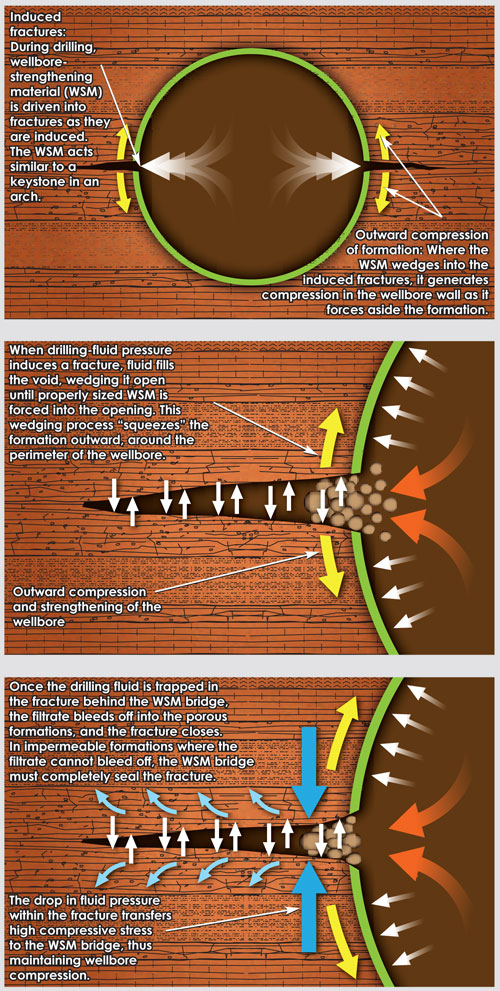
“We will run our wellbore-strengthening technique and look at the reservoir, the underpressured zone, what the overbalance pressure is going to be and the porosity of the foundation, then model a bridging package that will help seal the zone,” he said.
Using a product like Baker Hughes’ MAX-BRIDGE in an area like a depleted reservoir can reduce pore pressure transmission and seal micro-fractures in shale and low-porosity sands. This bridging system consists of a deformable sealing polymer with graphite additives. It mitigates pipe sticking, downhole losses and torque and drag, and it’s applicable in water-based and invert emulsion mud systems.
IS OIL OR WATER BETTER?
There are some advantages to using water-based fluids over oil-based. For instance, water-based fluids do not damage the reservoir as much nor do they leave behind fluid-coated cuttings for disposal like oil-based muds.
MAX-BRIDGE and SHALEDRIL are considered some of the advances in water-based fluids. However, with wells increasing in complexity, like with deviated wells and s-curve wells, using water-based muds can pose more of a challenge because it’s not naturally lubricious. “We can add lubricants to water-based muds, but if you start out with something that’s inherently lubricious, you’ve already dealt with one of the challenges,” Halliburton’s Mr Braley said.
Oil-based muds are readily lubricious and offer a faster rate of penetration (ROP) and a more stable wellbore by not soaking into the well’s foundation. Synthetic fluids also do not produce hydrates like water-based muds, which can clog choke and kill lines, stalling drilling further.
Micronized barite is one of the recent major advances in synthetic fluids. When used in drilling fluids to increase density, using very finely-ground barite or other mineral weighting agents allows lower rheological properties to be used, that result in lower annular pressure losses while not experiencing barite sag. This allows the operator to have a fluid with a much lower effective circulating density, ConocoPhillips’ Mr Beardmore said.
This is a helpful tool when drilling a narrow pressure window or drilling complex, high-angle wells where barite sag or narrow annulus situations can lead to problems, he said.
Even diesel-based fluids have undergone a transformation into a more environmentally friendly fluid. Diesel-based fluids contain cyclic molecules that are complex and won’t degrade. This is why most diesel muds are banned in many areas of the world.
However, Halliburton developed a fluid system called the INTEGRADE invert emulsion system, is a diesel-based fluid system that is organophilic clay-free and lignite free. Polymer technology replaced these elements, which has led to better ECD control when tripping in and out of the hole and less wellbore damage, Mr Braley said.
Cleaning up the cuttings
While there has been movement toward using low-toxicity synthetic fluids, cleaning up cuttings can get complicated depending on the region’s disposal regulations.
“Years ago we just focused on aquatic toxicity. When the industry realized that there was more than just aquatic toxicity, they looked at things such as biodegradation and how long cuttings stayed in the ecosystem,” Dr Friedheim said.
This resulted in more environmental regulations on waste-management disposal. Innovations such as M-I SWACO PARALAND, for instance, helps fluid-soaked cuttings degrade faster by formulating a drilling fluid using synthetic biodegradable base fluids, additives and a non-chloride internal phase, which can ameliorate some of the consequences of using synthetic fluids.
So which is better – water-based or oil-based? Both have pros and cons depending on the job.
According to Mr Beardmore, evaluating the complexity of the well can help determine what kind of fluid is best. “If you’re drilling a simple well, you often shouldn’t use an oil-based mud because it’s more expensive, but if you’re drilling a complex well, a synthetic fluid would likely be more cost-effective,” he said.
Especially if the simple well in question has the potential to have a lot of loss circulation, replenishing the well with oil-based fluid versus water-based would be more expensive for the operator.
Completion fluids
Completion fluids have also advanced. For example, Halliburton’s N-SOLATE, thermally insulating packer fluids solution, targets and controls heat transfer as oil is coming up the well. This helps improve production by keeping the oil from depositing asphaltenes in the production tube, which can impact production rates. This solution uses thermally activated polymer technology (TAPT) to control convection and conduction heat transfer in the well. Originally, the N-SOLATE system was aimed toward the offshore market to mitigate annular pressure buildup between the production casing and outer casing once the well has been put on production.
However, Halliburton had the opportunity to test its third version of the product (N-SOLATE 600) for a customer in the Middle East who was drilling steam-injection wells. Because the steam reached over 500°F, the customer saw an excessive amount of casing expansion.
By applying this packer fluid, the customer was able to reduce casing expansion by more than 50%. Halliburton now has two other opportunities to apply this packer fluid in Alaska and Russia, where permafrost melting is a consistent problem. “Once the technology came out, other opportunities became apparent. But when we were talking about developing a packer fluid, because of the terminology we used, people weren’t thinking outside the box of where else this could be used,” Mr Braley said.

ADVANCES IN MUD MONITORING
Thinking outside the box is always necessary when developing new technology. In addition to the developments that have been made to the fluids themselves, experts have come up with better mud-monitoring software to test wellbore strength and plan what kind of fluid to use.
“Wellbore-strengthening modeling has evolved more into a science than an art. A couple of years ago we didn’t really have the tools to model wellbore strengthening, we only had a general concept, and that’s what we’re working on now,” Baker Hughes’ Mr Trenery said. “It’s not ‘one shoe fits everything.’ It’s customized techniques for given locations and wells.”
In his opinion, modeling wellbore strengthening techniques allows the operator to be objective, safer and more efficient.
For example, Chevron currently has a study focusing on mud monitoring in shale areas. A joint project derived from the company’s Tulsa University Center of Research Excellence and professor Mengjiao Yu. The duo has worked to pinpoint what elements are needed to keep shale wells stable when using water-based muds. Dr Yu has created a modeling system that, with a few well parameters or cutting samples, can determine everything from the effects of temperature on shale, to how much salt you need to put into the drilling fluid to keep the shale from collapsing. His modeling system can also estimate how quickly strength will be lost and how the operator needs to respond. The wellbore stability model is able to take into account multiple solutes, as well as key parameters such as initial rock strength, pore pressure changes, temperature, and time, Mr Bloys said.
Halliburton is also working on automated mud-monitoring equipment and the introduction of its real-time engineering software which focuses on hole cleaning and ECD management. Working with Sperry’s INSITE software, the company has been able to transmit real-time drilling data from the rig and incorporate it into the model. “When we first rolled it out, it was really exciting, but we quickly identified that a major limitation we had was that the actual drilling fluid testing information around rheology and density weren’t in real time,” Mr Braley said.
Since then, the company developed a real-time density and viscosity meter, which was able to be implemented in field tests in about a six-month window. This tool allows fluid properties to be checked continuously on approximately a 30-minute cycle, which Mr Braley said keeps his engineers free to analyze data and optimize performance. “For me the benefit of this technology is freeing up time so the drilling fluids engineer can actually engineer and have to time analyze the results rather than being in a sort of ‘testing only’ mode. It’s about increasing efficiency and effectiveness of our people.”
7 ways to strengthen your wellbore
1) Putting Granular loss-circulation materials in the mud before can help stop up fractures in the foundation, preventing loss. This includes materials like ground-up rock, nuts and paper.
2) Using high fluid loss slurry when you have lost circulation into a fracture, the slurry loses all of its liquid to the formation and leaves behind solids to plug the fracture and prevent losses.
3) Chemical sealant is like an epoxy that is pumped into the wellbore that leaks into the formation and then set up in the pore space and prevent losses.
4) Heating the wellbore will make it stronger. If you heat the rock around the wellbore, it’s going to try and expand, so it increases rock stress, which makes it harder to break down.
5) Smear effect – This happens when drilling with casing. The pipe smears the cuttings and filter cake into the wall, creating a plaster-like sealant that keeps the wellbore from breaking down.
6) Rigid-plug forming treatment are liquids that, when mixed, transform into cross-linked polymers, latex rubber, cement, etc, that set up in the fractures of a well to prevent lost circulation.
7) Ultra-low fluid loss muds are used to mitigate losses in permeable formations. By putting things in the mud that reduce the initial spurt loss of mud into the formation, that make the filter cake nearly impermeable and the wellbore is less likely to break down.
* Information provided by Dave Beardmore, ConocoPhillips.
ON THE HORIZON
Where is the industry headed now? ConocoPhillips’ Dave Beardmore hopes the industry will create better high-temperature systems and high-performance water-based muds. “It is the ‘holy grail’ of the industry to find a water-based mud that drills like an oil-based mud,” he said. This, he believes will continue to be a challenge for industry experts.
Of course, as one process of development ends, another one begins and shows the true cyclical nature of this industry. “We continue to look for new solutions. Now we’re getting back into that circle of how do we break down the new systems that we’ve made to survive in HPHT wells and clean them up and remediate them,” Mr Braley said.

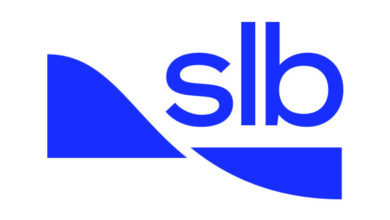



Excellent review of current muds, but there are mud companies other than the big three who are very successful at wellbore stability/strengthening. In particular you should interview Newpark and Scomi drilling fluids.
drilling fluid teams throughout the industry have developed high-performance drilling fluids to meet environmental regulations while utilizing wellbore-strengthening techniques to preserve the well.“Reliability is a key factor for the operators. They want a fluid that is reliable, and the more reliable fluids are oil-based or synthetic-based muds,”
The main sources of drilling fluids into water environment are accidental spillage, standing of tankers and also drill cutting processes. 3-4 million tonnes of oil gets wasted in the sea through human activities and tanker accidents.
we use water and clay and HPAM only to drill shale formation and 400meters a day. very reliablly
The issue of imparting hydrate suppression to Water based mud still needs more attention than what it is attracting today. With increased use of LDHIs the mud formulations need to exhibit tendency to resist the formation of hydrates at mud weights as low as 8.7. This is one of the biggest challenge industry is facing today in order to achieve the breakthrough and provide additional option to operators to use WBM over SOBM